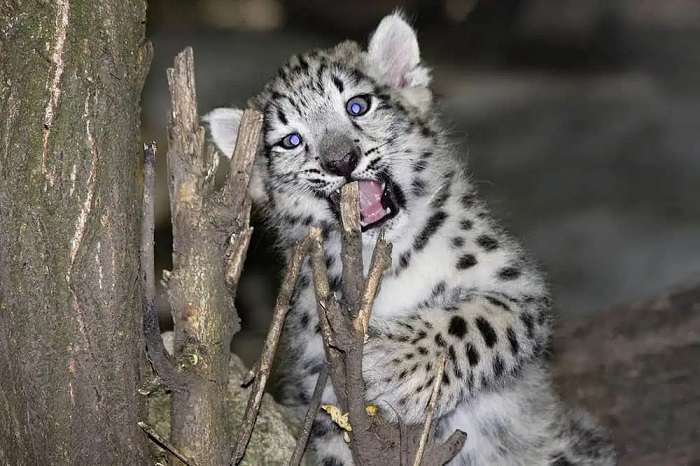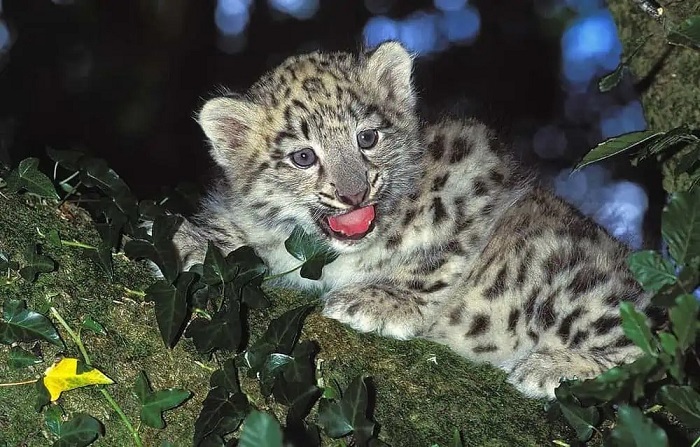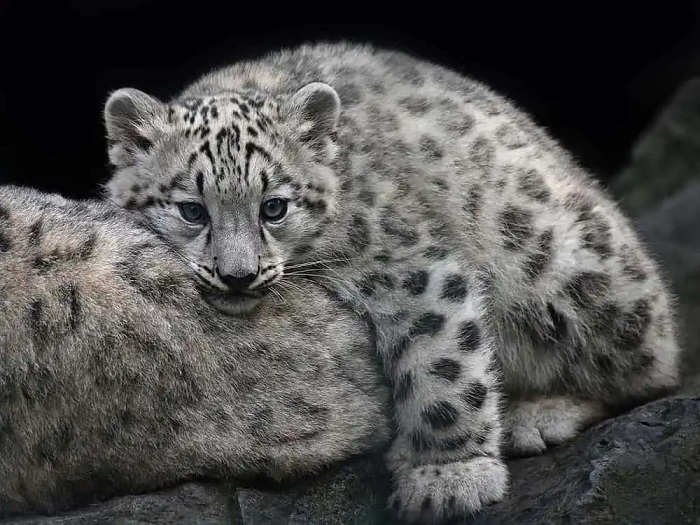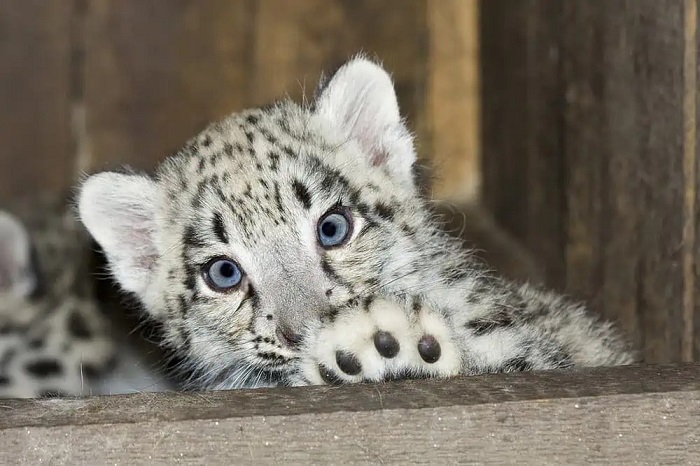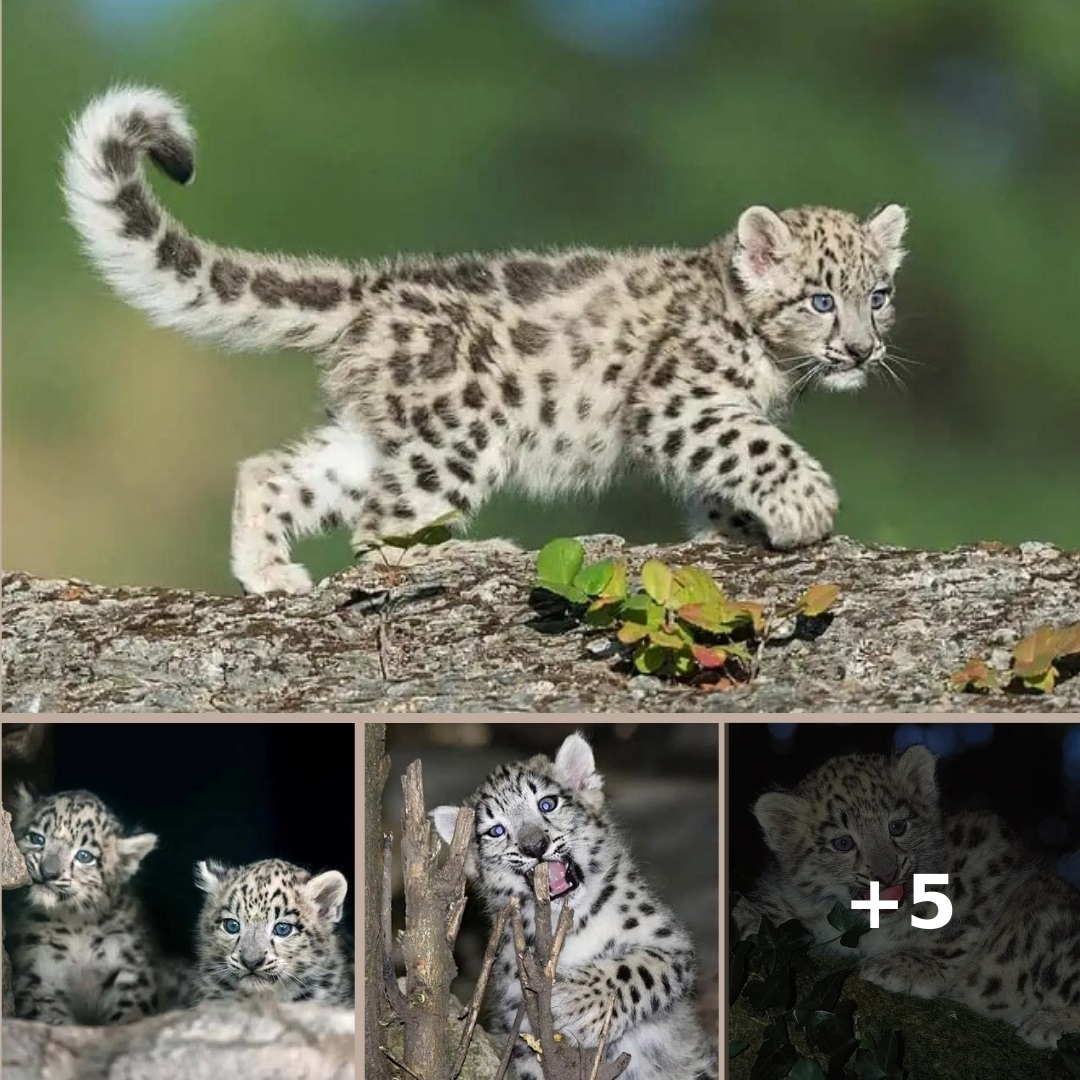Nestled amidst the lofty heights of the Himalayan Mountains, where thin air meets jagged rocks and bitter cold, roams one of Earth’s most captivating felines – the snow leopard.
Often hailed as the “ghost of the mountains,” these elusive and iconic cats gracefully navigate the harsh terrain, embodying untamed elegance and wild beauty.
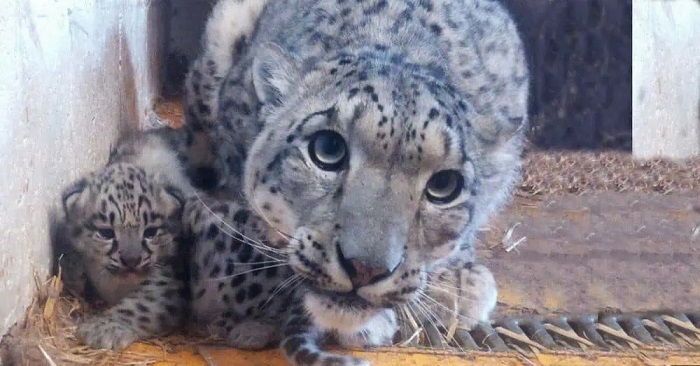
While adult snow leopards command awe and admiration, their adorable and remarkable offspring add another layer of enchantment to their story.
Let’s delve into the world of these precious cubs, accompanied by captivating images and intriguing facts.
At birth, snow leopard cubs are tiny, weighing merely around 1 pound, in stark contrast to their full-grown counterparts, which can measure 2 to 5 feet long and weigh between 60 to 100 pounds.
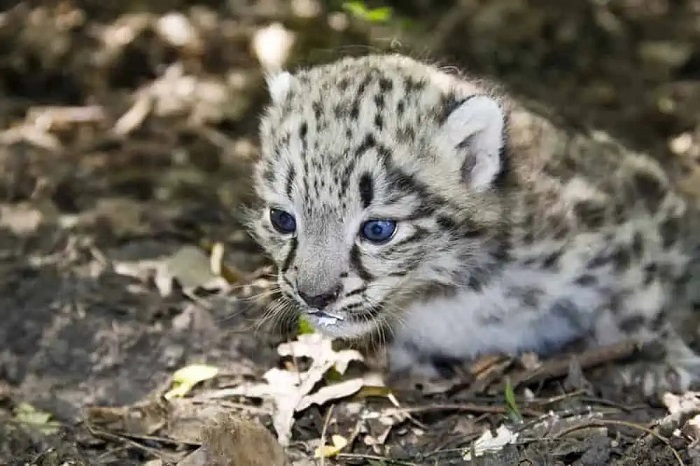
Helpless and blind, newborn cubs rely entirely on their mother for care and protection. It takes about a week for their eyes to open and five weeks to start walking independently.
However, they remain within the safety of their den for at least two to three months under the watchful eye of their attentive mother, nursing and safeguarding them until they’re ready to explore the world.
Snow leopards, inhabitants of the remote and secluded regions of South and Central Asia, lead solitary lives in the mountains’ lofty heights.
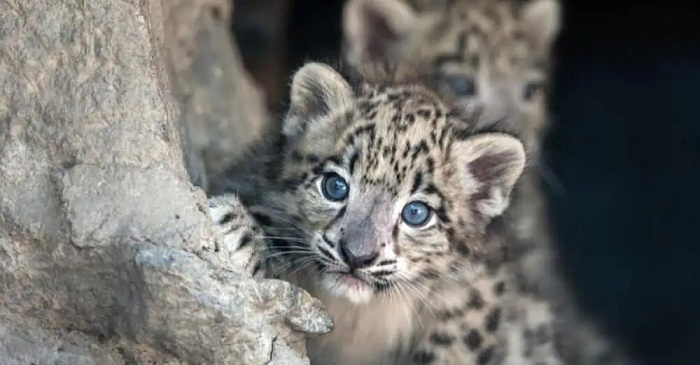
Female snow leopards give birth to two or three cubs after a gestation period of 90 to 100 days, usually between April and July, with many born in June or July.
Following mating, females venture alone to raise their cubs, modifying their behavior to ensure their offspring’s safety and survival.
Adapted to their cold mountainous environment, snow leopard cubs are born with a thick fur coat, offering insulation against the frigid temperatures.
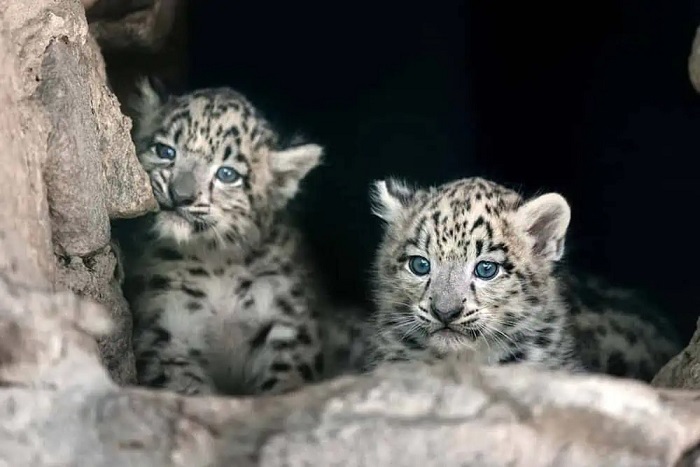
Their coats, adorned with beautiful white or gray fur and black spots, provide exceptional camouflage amid the rocky terrain, essential for their protection from potential threats.
As they grow, snow leopard cubs quickly learn essential survival skills under their mother’s guidance, such as hunting and navigating the challenging terrain.
With remarkable jumping abilities, agile bodies, and lengthy tails, they can leap up to 30 feet in the air and cover distances of 50 feet, surpassing other big cats in agility.
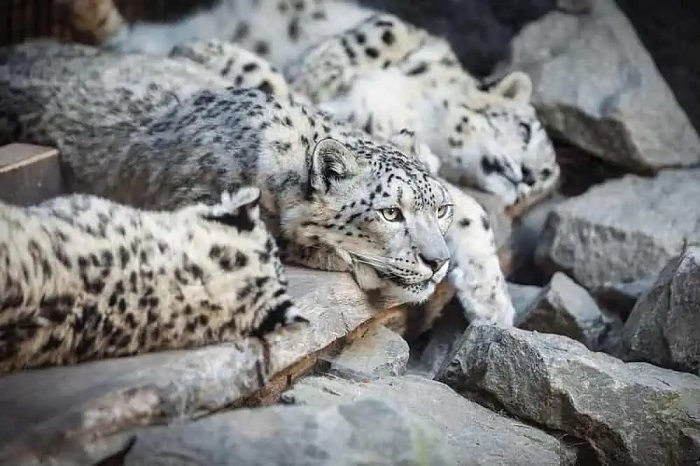
Despite their vulnerable status in the wild due to habitat loss and poaching, efforts are underway to protect snow leopards and their fragile ecosystems.
Organizations like the Snow Leopard Trust and the Snow Leopard Conservancy, along with global collaborations through initiatives like the Global Snow Leopard and Ecosystem Protection Program, strive to ensure the survival of these majestic creatures.
Witnessing the playful antics and endearing interactions of snow leopard cubs serves as a reminder of the importance of preserving these magnificent animals and the ecosystems they inhabit.

